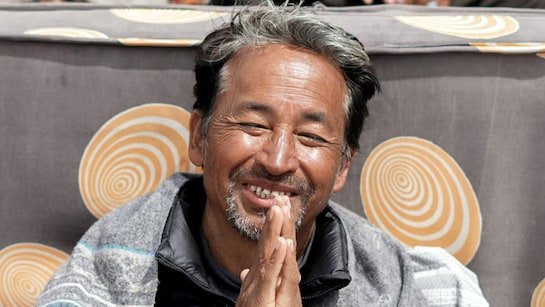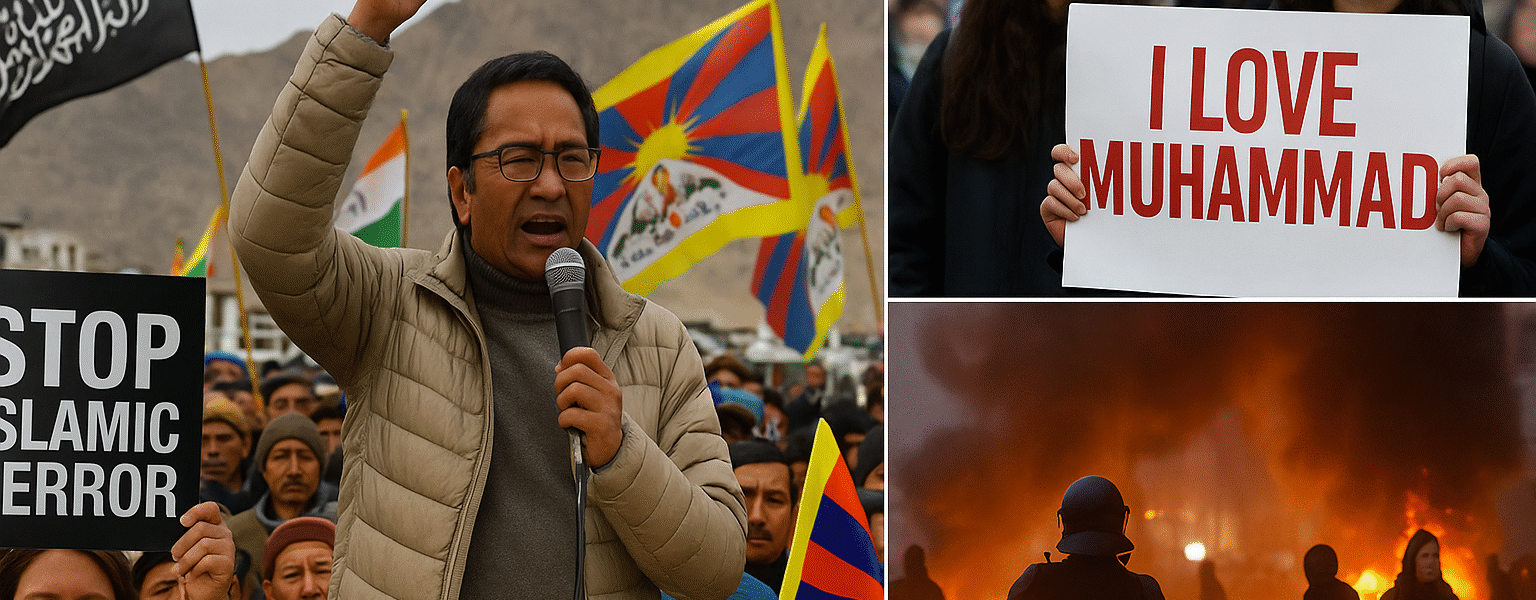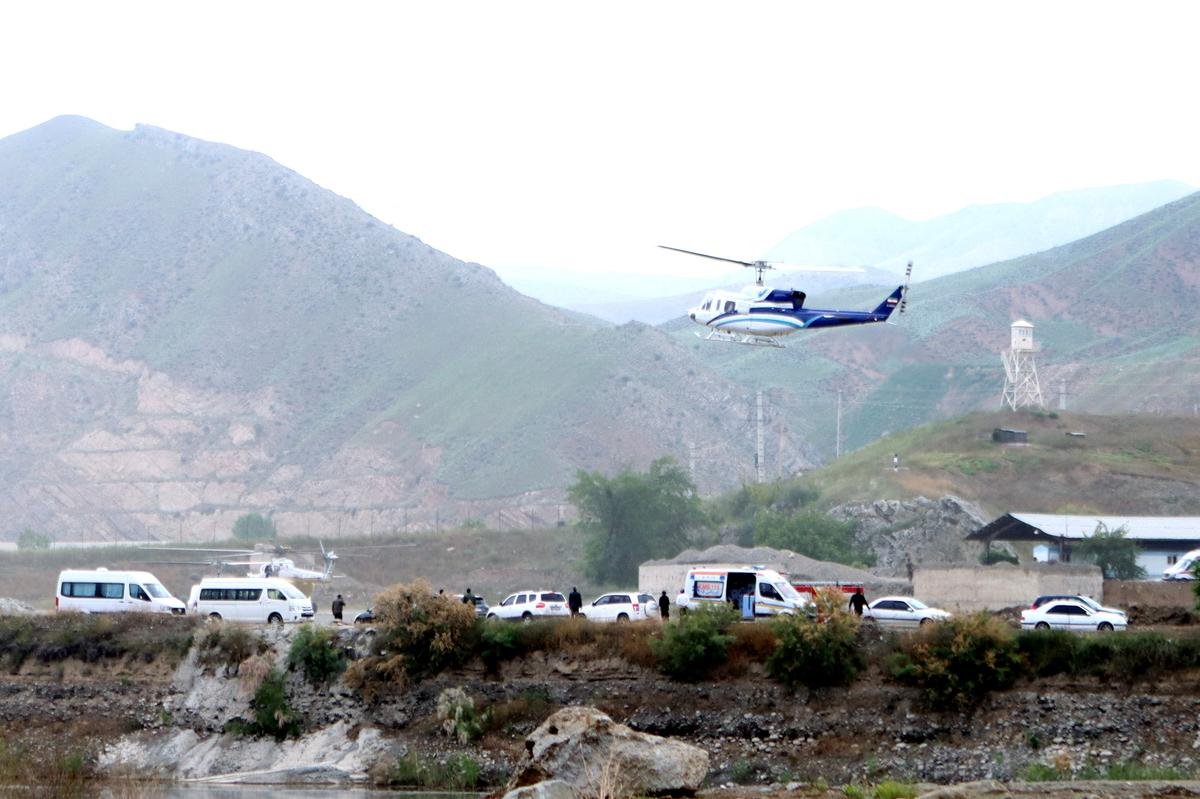Global Toolkits & Geopolitical Disruptions: India in the Crosshairs
Toolkits, Protests, and Geopolitics: How Narratives of Disruption Are Being Tested in India
Introduction
The global order is passing through one of its most turbulent decades in recent history. From Europe’s struggles with refugee integration and radical Islamist violence, to America’s deep entanglement in the Middle East, to China’s expanding influence in Asia, almost every continent is witnessing disruption in the name of ideology, identity, or power.
Amidst this backdrop, India emerges as a unique case: a fast-developing economy, politically stable, and increasingly assertive on global platforms. Yet, this very rise appears to make it a target for those vested interests that seek disruption rather than peace. In recent months, controversies ranging from Gen Z protests to the “I Love Muhammad” campaign and even to localised unrest in Ladakh have reignited debates about foreign toolkits, deep state narratives, and the dangers of imported protests.
The Global Context: Turbulence Across Continents
To understand India’s situation, one must look beyond its borders:
- Middle East: Israel–Hamas conflict continues to fuel polarisation worldwide, with Arab world unrest spilling over into diaspora communities in Europe and beyond.
- Europe: The Ukraine war has drained economic and military resources, leaving the continent fragile and dependent on external support.
- China: Beijing’s rise as both a commercial and security competitor challenges Western supremacy in Asia, forcing recalibration of alliances.
- United States: Washington remains stretched between supporting Israel, containing China, and shoring up NATO against Russia.
In such a turbulent environment, a rising India—independent in decision-making, unwilling to surrender to pressure, and pushing for multipolarity—naturally unsettles entrenched interests.
Narratives and Toolkits: The “Tested and Tried” Strategy
The past decade has seen the rise of what analysts call the “protest toolkit” approach—coordinated campaigns that mobilise youth, exploit digital platforms, and create mass appeal through cultural or political icons.
- Gen Z Protests Abroad: Nepal’s 2025 “Gen Z uprising” that toppled a pro-China government and Bangladesh’s violent student protests were reminders of how rapidly youth-led mobilisation can destabilise elected governments.
- India’s Previous Experience: The anti-CAA protests, farmer protests, and pre-COVID mobilisations showed similar features—mass participation, digital amplification, and foreign NGO support.
These patterns are neither accidental nor entirely organic. Intelligence assessments in many countries have highlighted the flow of funds, influence of foreign think tanks, and support of networks tied to wealthy financiers, including George Soros.
The Case of Sonam Wangchook: A Convenient Symbol

In this geopolitical chessboard, figures with mass appeal often become tools of larger narratives. Sonam Wangchook, the engineer-activist whose persona inspired Bollywood’s 3 Idiots character, is one such figure.
- Mass Appeal via Bollywood: Thanks to popular culture, Wangchook is not just an activist in Ladakh—he is a recognisable national figure.
- The Ladakh Protests: His agitation around Ladakh’s ecological and political rights received widespread attention. Yet, the manner of mobilisation—its digital echo, sudden amplification, and political timing—raises questions.
- Government’s Response: The administration acted swiftly, limiting escalation and preventing unrest from spreading beyond the region. Reports suggest that Wangchook avoided confrontation with the state thereafter, leaving unanswered questions about external encouragement and funding.
This episode fits into the larger template: using a respected or “neutral” face to mobilise unrest, creating a narrative of victimhood, and then pushing it into international headlines.
The “I Love Muhammad” Campaign: Another Toolkit at Work?
Parallel to Ladakh, India has witnessed the controversial I Love Muhammad campaign, which triggered communal clashes in states like Uttar Pradesh, Karnataka, and Gujarat. While presented as a devotional movement, its sudden spread, violent flashpoints, and counter-campaigns suggest more than spontaneous religious fervour.
- Communal Targeting: The campaign appeared designed to provoke Hindu communities, which remain largely peaceful and coexistent but are now being pushed into cycles of reaction.
- Digital Amplification: Hashtags and online posters flooded social media in coordinated bursts—classic toolkit behaviour.
- Political Timing: The campaign coincides with heightened electoral activity and global scrutiny of India’s democracy.
Why India Is in the Crosshairs
India is not Nepal or Bangladesh. Its democratic institutions, federal structure, and societal resilience are much stronger. Yet, this is exactly why toolkits are being tested here:
- Unacceptability of India’s Rise: Since 2014, India has made independent choices in defence, trade, and diplomacy that often do not align with Western or Chinese interests.
- Resistance to Pressure: Whether in buying discounted Russian oil, refusing Western lectures on domestic issues, or asserting its role in the Global South, India has signalled it will not “surrender.”
- A Threat to Supremacy: For decades, the balance of power in Asia was structured to preserve Western dominance. India’s growth upsets this balance.
Thus, disruption—through protests, communal flashpoints, and narrative wars—becomes the preferred tool for those who cannot contain India economically or militarily.
Lessons and Outlook
The moral of this story is clear: while India will continue to face attempts at destabilisation through toolkits, protests, and propaganda, its people and institutions are far more mature and resilient than those of smaller neighbours.
- Past Precedent: The government successfully managed large-scale unrest before COVID, from the Shaheen Bagh protests to the farmers’ agitation, with minimal permanent damage to national stability.
- Future Risks: Similar unrest will likely resurface, repackaged under new names or slogans, often tied to global geopolitical turbulence.
- The Key Test: Whether Indian society can remain united, avoid being drawn into identity-based traps, and resist foreign influence in shaping domestic narratives.
Conclusion
From Islamic radicalism in Europe to wokism in Western campuses, from Gen Z protests in Nepal to toolkits in India, the playbook of disruption is becoming increasingly standardised. The global objective seems clear: weaken states that challenge the existing order, exploit cultural divides, and ensure no alternative poles of power rise easily.
For India, the challenge is to stay alert without becoming paranoid, to protect freedoms while defending sovereignty, and to ensure that the “tested and tried” disruptions of the world remain only failed experiments on its soil.
Geopolitical disruptions India, Sonam Wangchook Ladakh protests, Gen Z protests toolkit Nepal Bangladesh, I Love Muhammad campaign India, Islamic radicalism and wokism, Breaking India toolkit narrative, Global power struggle Asia, Vested interests and deep state India, Bollywood propaganda and politics, India’s rise vs Western supremacy,
#Geopolitics #WorldNews #InternationalAffairs #GlobalSecurity
Discover more from
Subscribe to get the latest posts sent to your email.










2 COMMENTS